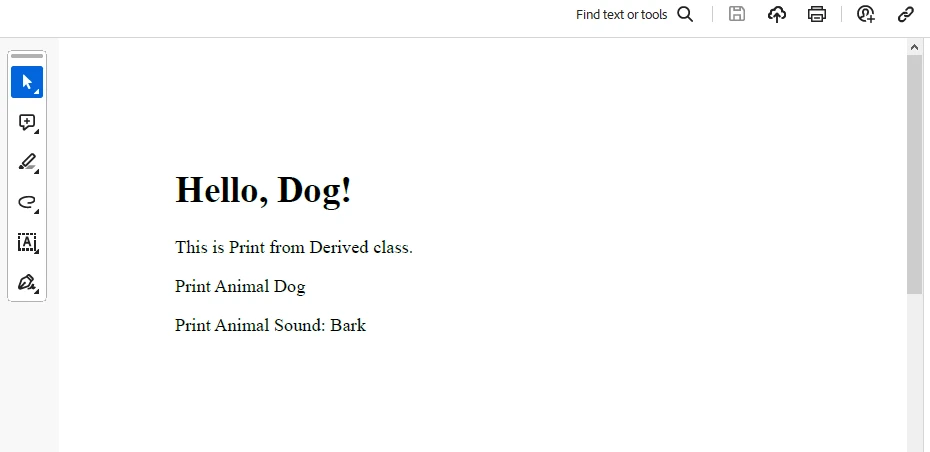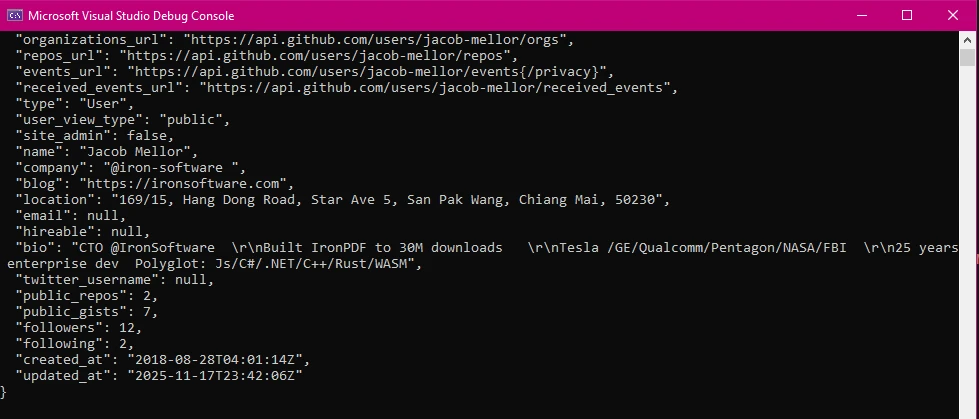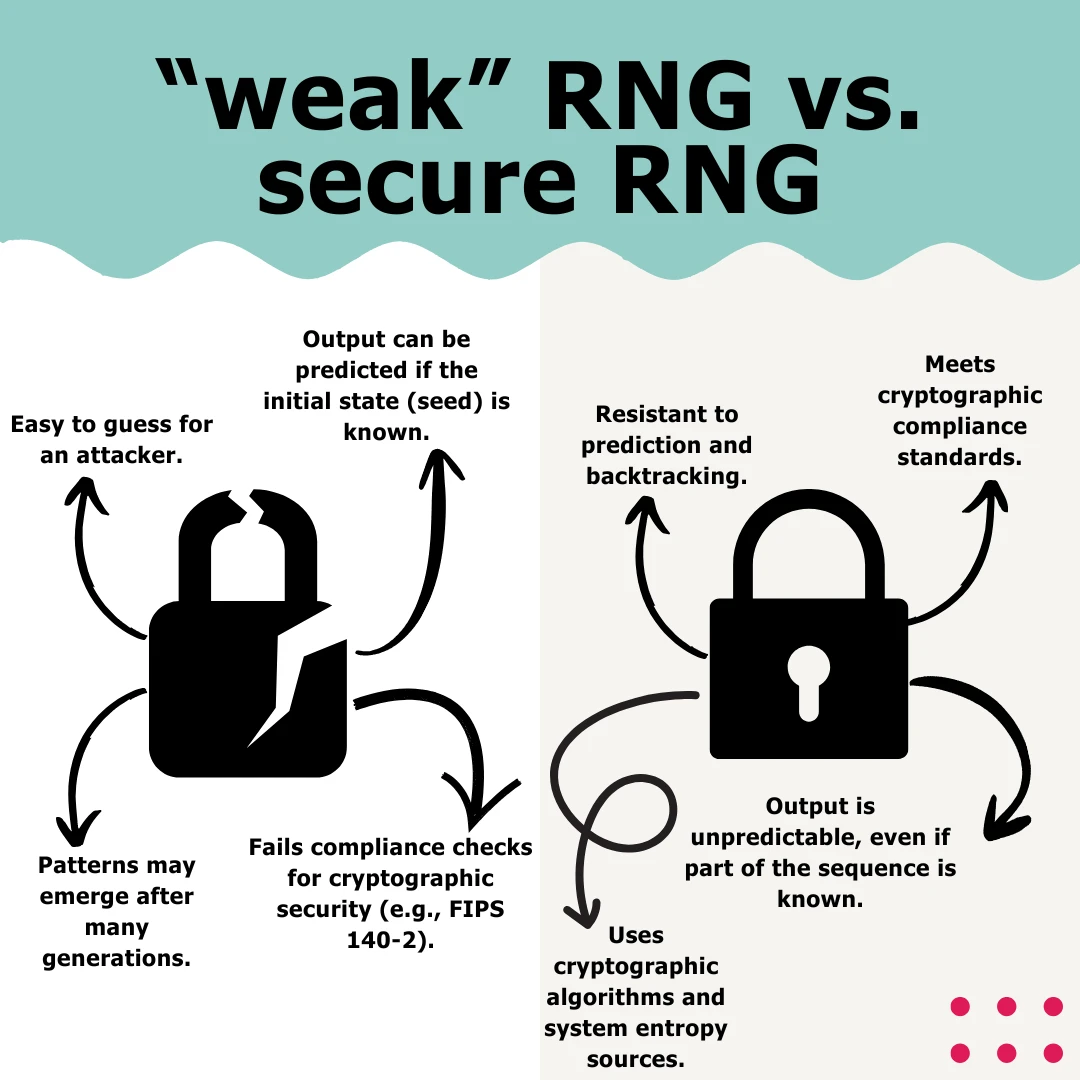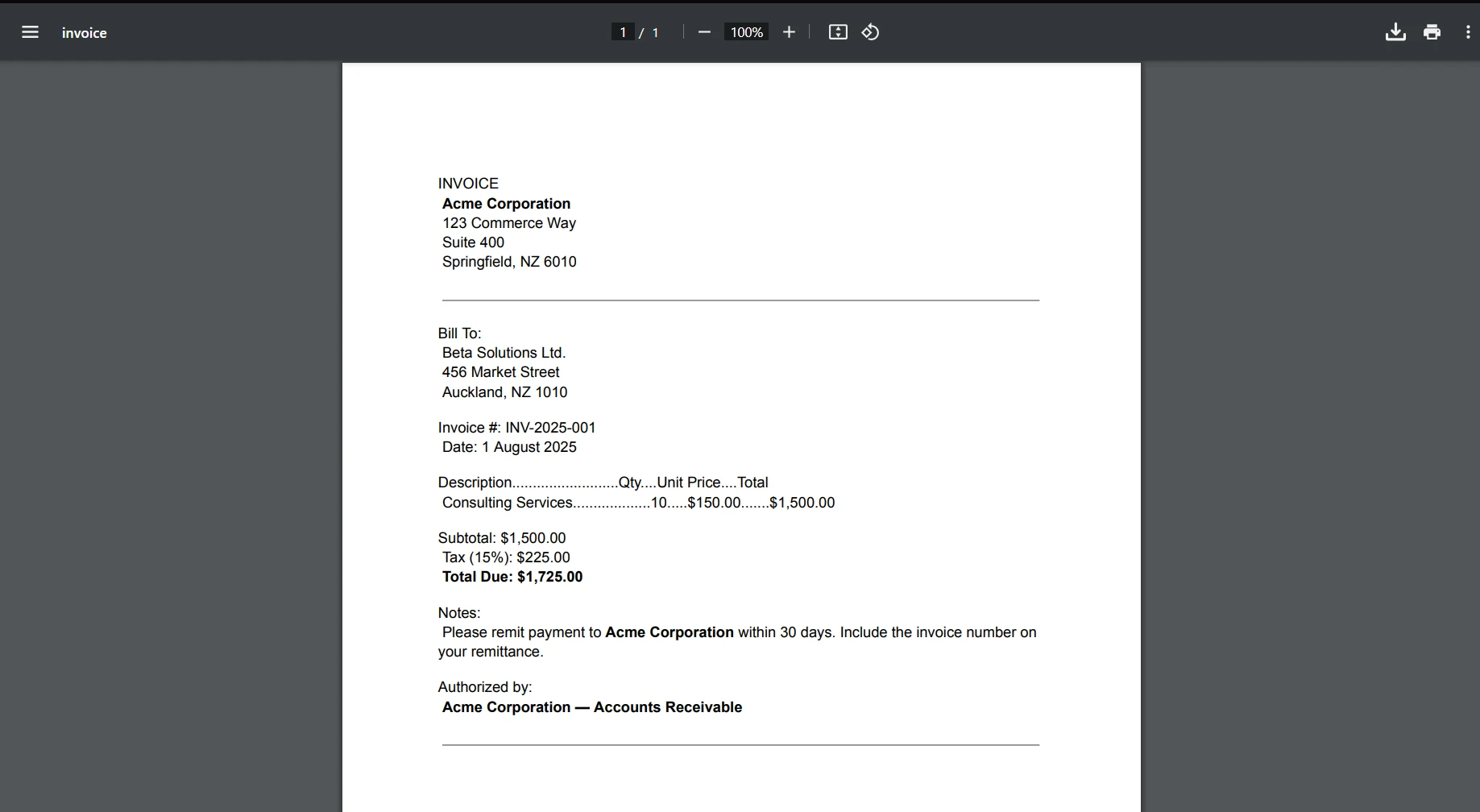C# Sealed Class (How It Works For Developers)
In the world of object-oriented programming, the C# language provides developers with a versatile set of tools to design and implement robust software. One such feature that adds an extra layer of control to class inheritance is the concept of a sealed class. Sealed classes offer a unique way to restrict the inheritance hierarchy, providing a level of security and encapsulation that can be beneficial in certain scenarios. In this article, we will delve into the intricacies of the C# sealed classes and also explore the IronPDF NuGet package from Iron Software.
What are Sealed Classes and Sealed Methods?
Sealed Class: In C#, a sealed class is a class that cannot be inherited. By using the sealed keyword, developers can prevent other classes from deriving or extending from the sealed class. This deliberate restriction ensures that the sealed class cannot be used as a base class for any other class, limiting the scope of the inheritance hierarchy. Sealed classes are often employed when a developer wants to control and finalize the structure of a class, preventing unintended modifications through inheritance.
Consider the following example:
public sealed class Animal
{
public string Species { get; set; }
public void MakeSound()
{
Console.WriteLine("Generic animal sound");
}
}
// The following code will cause a compilation error because 'Animal' is sealed and cannot be inherited:
// public class Dog : Animal // Error: Cannot inherit from sealed class 'Animal'
// {
// }public sealed class Animal
{
public string Species { get; set; }
public void MakeSound()
{
Console.WriteLine("Generic animal sound");
}
}
// The following code will cause a compilation error because 'Animal' is sealed and cannot be inherited:
// public class Dog : Animal // Error: Cannot inherit from sealed class 'Animal'
// {
// }Public NotInheritable Class Animal
Public Property Species() As String
Public Sub MakeSound()
Console.WriteLine("Generic animal sound")
End Sub
End Class
' The following code will cause a compilation error because 'Animal' is sealed and cannot be inherited:
' public class Dog : Animal // Error: Cannot inherit from sealed class 'Animal'
' {
' }Unlike structs, which are implicitly sealed, the sealed class has to be declared using the sealed keyword as shown above. In this example, the Animal class is declared as sealed, making it impossible for any other class to inherit from it.
Sealed Method: In addition to sealing entire classes, C# also allows developers to seal individual methods within a class. A sealed method is a method that any derived class cannot override. This ensures that the behavior of the method remains consistent across all subclasses, providing a level of predictability in the application's logic.
To seal a method, use the sealed modifier:
public class Animal
{
public string Species { get; set; }
// A virtual method allows derived classes to override it.
public virtual void MakeSound()
{
Console.WriteLine("Generic animal sound");
}
}
public class Dog : Animal
{
// The sealed override prevents further overriding of this method.
public sealed override void MakeSound()
{
Console.WriteLine("Bark!");
}
}public class Animal
{
public string Species { get; set; }
// A virtual method allows derived classes to override it.
public virtual void MakeSound()
{
Console.WriteLine("Generic animal sound");
}
}
public class Dog : Animal
{
// The sealed override prevents further overriding of this method.
public sealed override void MakeSound()
{
Console.WriteLine("Bark!");
}
}Public Class Animal
Public Property Species() As String
' A virtual method allows derived classes to override it.
Public Overridable Sub MakeSound()
Console.WriteLine("Generic animal sound")
End Sub
End Class
Public Class Dog
Inherits Animal
' The sealed override prevents further overriding of this method.
Public NotOverridable Overrides Sub MakeSound()
Console.WriteLine("Bark!")
End Sub
End ClassThe virtual keyword allows the method to be overridden in derived classes, while the sealed keyword prevents further overriding the base class virtual method in any subsequent subclasses.
Sealed Class and Class Members: Sealed classes can also include sealed members, such as properties, methods, and events. This combination of sealed class and sealed members ensures a high degree of control over the class's behavior and structure.
Consider the following example:
public sealed class ControlledClass
{
// A sealed property that prevents overriding.
public sealed string ControlledProperty { get; set; }
// A method that cannot be redefined by derived classes.
public virtual sealed void ControlledMethod()
{
// Method implementation
Console.WriteLine("Executing controlled method.");
}
// A sealed event that cannot be subscribed to or raised by derived classes.
public sealed event EventHandler ControlledEvent;
// Sealed indexers, if applicable
public sealed string this[int index]
{
get { return "Value"; }
set
{
// Setter implementation
}
}
}public sealed class ControlledClass
{
// A sealed property that prevents overriding.
public sealed string ControlledProperty { get; set; }
// A method that cannot be redefined by derived classes.
public virtual sealed void ControlledMethod()
{
// Method implementation
Console.WriteLine("Executing controlled method.");
}
// A sealed event that cannot be subscribed to or raised by derived classes.
public sealed event EventHandler ControlledEvent;
// Sealed indexers, if applicable
public sealed string this[int index]
{
get { return "Value"; }
set
{
// Setter implementation
}
}
}Public NotInheritable Class ControlledClass
' A sealed property that prevents overriding.
Public NotOverridable Property ControlledProperty() As String
' A method that cannot be redefined by derived classes.
Public Overridable NotOverridable Sub ControlledMethod()
' Method implementation
Console.WriteLine("Executing controlled method.")
End Sub
' A sealed event that cannot be subscribed to or raised by derived classes.
Public Event ControlledEvent As EventHandler
' Sealed indexers, if applicable
Default Public NotOverridable Property Item(ByVal index As Integer) As String
Get
Return "Value"
End Get
Set(ByVal value As String)
' Setter implementation
End Set
End Property
End ClassIn this example, every aspect of the ControlledClass is sealed – the property, method, event, and even an indexer if applicable. This level of sealing provides a robust and unalterable structure, ideal for scenarios where the class's design should remain fixed.
The Rationale Behind Sealed Class
Code Security: Sealed classes contribute to code security by preventing unauthorized access and modification. When a class is sealed, it serves as a closed entity with a well-defined interface and behavior. This encapsulation minimizes the risk of unintended side effects or alterations that could potentially compromise the stability and security of the codebase.
Design Integrity: In larger codebases or frameworks, maintaining design integrity is paramount. A sealed class acts as a foundational building block with fixed structures, reducing the chances of unintended modifications. This is particularly beneficial in scenarios where a class serves as a core component of a system, and its behavior should remain consistent across different modules.
Best Practices for Using Sealed Class
- Use the Sealed Class Sparingly: While the sealed class offers benefits, they should be employed judiciously. Overuse of sealed classes can lead to rigid and less maintainable code.
- Document Intent: When sealing a class or method, it's crucial to document the intent behind this decision. Explain why a particular class is sealed and what design considerations led to that choice.
- Consider Future Extensibility: Before sealing a class, consider whether future requirements might necessitate extensibility. If there's a likelihood that a class will need to be extended, sealing it may hinder future development.
- Use Sealed Methods for Stability: Sealing methods can be beneficial when the core behavior of a method should remain stable across different subclasses. This can enhance the predictability of the code.
- It Cannot Also be Abstract: A sealed class/sealed methods cannot also be an abstract class/abstract methods as abstract classes are designed to be inherited by other classes while sealed classes restrict inheritance.
Introducing IronPDF

IronPDF is a C# PDF library from Iron Software and is a modern PDF generator and reader.
Installation
IronPDF can be installed using the NuGet Package Manager console or using the Visual Studio package manager. Below is the command for the console:
Install-Package IronPdf
Or, to install IronPDF using NuGet Package Manager, search "ironpdf" in the search bar of NuGet Package Manager.

IronPDF and Sealed Classes
Together, the sealed keyword and IronPDF can be used to prevent a sub-class library or a derived library from overriding inherited members and also generate PDFs.
namespace OrderBy
{
public class Program
{
static void Main()
{
Console.WriteLine("Demo Sealed Class and IronPdf");
var dog = new Dog();
dog.MakeSound();
dog.Print();
}
}
// Base class
public class Animal
{
public string Species { get; set; }
public virtual void MakeSound()
{
Console.WriteLine("Generic animal sound");
}
public virtual void Print()
{
Console.WriteLine("Generic animal Print");
}
}
public class Dog : Animal
{
// Sealed override ensures method cannot be overridden in further derived classes.
public sealed override void MakeSound()
{
Console.WriteLine("Bark!");
}
public sealed override void Print()
{
var pdfRenderer = new ChromePdfRenderer();
string content = @"
<!DOCTYPE html>
<html>
<body>
<h1>Hello, Dog!</h1>
<p>This is Print from Derived class.</p>
<p>Print Animal Dog</p>
<p>Print Animal Sound: Bark</p>
</body>
</html>";
pdfRenderer.RenderHtmlAsPdf(content).SaveAs("dog.pdf");
}
}
}namespace OrderBy
{
public class Program
{
static void Main()
{
Console.WriteLine("Demo Sealed Class and IronPdf");
var dog = new Dog();
dog.MakeSound();
dog.Print();
}
}
// Base class
public class Animal
{
public string Species { get; set; }
public virtual void MakeSound()
{
Console.WriteLine("Generic animal sound");
}
public virtual void Print()
{
Console.WriteLine("Generic animal Print");
}
}
public class Dog : Animal
{
// Sealed override ensures method cannot be overridden in further derived classes.
public sealed override void MakeSound()
{
Console.WriteLine("Bark!");
}
public sealed override void Print()
{
var pdfRenderer = new ChromePdfRenderer();
string content = @"
<!DOCTYPE html>
<html>
<body>
<h1>Hello, Dog!</h1>
<p>This is Print from Derived class.</p>
<p>Print Animal Dog</p>
<p>Print Animal Sound: Bark</p>
</body>
</html>";
pdfRenderer.RenderHtmlAsPdf(content).SaveAs("dog.pdf");
}
}
}Namespace OrderBy
Public Class Program
Shared Sub Main()
Console.WriteLine("Demo Sealed Class and IronPdf")
Dim dog As New Dog()
dog.MakeSound()
dog.Print()
End Sub
End Class
' Base class
Public Class Animal
Public Property Species() As String
Public Overridable Sub MakeSound()
Console.WriteLine("Generic animal sound")
End Sub
Public Overridable Sub Print()
Console.WriteLine("Generic animal Print")
End Sub
End Class
Public Class Dog
Inherits Animal
' Sealed override ensures method cannot be overridden in further derived classes.
Public NotOverridable Overrides Sub MakeSound()
Console.WriteLine("Bark!")
End Sub
Public NotOverridable Overrides Sub Print()
Dim pdfRenderer = New ChromePdfRenderer()
Dim content As String = "
<!DOCTYPE html>
<html>
<body>
<h1>Hello, Dog!</h1>
<p>This is Print from Derived class.</p>
<p>Print Animal Dog</p>
<p>Print Animal Sound: Bark</p>
</body>
</html>"
pdfRenderer.RenderHtmlAsPdf(content).SaveAs("dog.pdf")
End Sub
End Class
End Namespace
Below is the PDF generated from IronPDF

Licensing (Free Trial Available)
IronPDF. This key needs to be placed in appsettings.json.
{
"IronPdf.LicenseKey": "your license key"
}Provide your email to get a trial license.
Conclusion
C# sealed classes offer developers a powerful mechanism to control the inheritance hierarchy and ensure that certain classes and their members cannot be extended or overridden. While the use of sealed classes should be carefully considered, they provide an effective means of encapsulating functionality and preventing unintended modifications. By understanding the concept of sealed classes and methods, developers can make informed decisions about when and where to apply this restriction, contributing to creating maintainable, secure, and predictable software systems. Together with IronPDF, we can also print PDF documents.
Frequently Asked Questions
How does a sealed class work in C#?
In C#, a sealed class is defined using the sealed keyword. This prevents other classes from inheriting from it, ensuring the class's implementation remains unchanged.
Why should developers use sealed classes in C#?
Sealed classes are used to maintain code integrity by preventing inheritance. This ensures that the class's behavior remains consistent and secure, particularly in larger systems where design integrity is crucial.
Can sealed classes have methods that are also sealed?
Yes, sealed classes can contain methods that are themselves sealed. This means the methods cannot be overridden in derived classes, further enhancing the security and consistency of the class's functionality.
What is the benefit of using sealed methods in a class?
Sealed methods prevent overriding by derived classes, which helps maintain the original behavior of the method, ensuring consistency and protecting against unintended modifications.
Can you provide examples of when to use sealed classes?
Sealed classes are useful when you want to lock down a class's implementation to prevent changes through inheritance, such as in utility classes or when working with sensitive operations where stability is required.
How do sealed classes relate to PDF generation in C#?
When using a PDF library like IronPDF, sealed classes can be leveraged to ensure that PDF generation processes remain consistent and secure, by preventing modifications through inheritance.
Is it possible to use sealed classes with third-party libraries like IronPDF?
Yes, sealed classes can be used alongside third-party libraries like IronPDF to encapsulate PDF generation logic within a secure, non-inheritable class structure.
How can I install a C# PDF library using NuGet?
You can install a C# PDF library, such as IronPDF, via the NuGet Package Manager by using the command dotnet add package IronPdf or by searching for 'ironpdf' in the Visual Studio NuGet Package Manager.
What are the considerations for using sealed classes in software design?
Developers should consider the need for future extensibility and document the reasons for sealing a class. Using sealed classes can enhance security and maintainability but should be balanced with the flexibility required by the application.
What is a recommended PDF generator for C# developers?
IronPDF is a recommended PDF generator for C# developers, providing robust PDF creation and manipulation capabilities as a NuGet package.





















